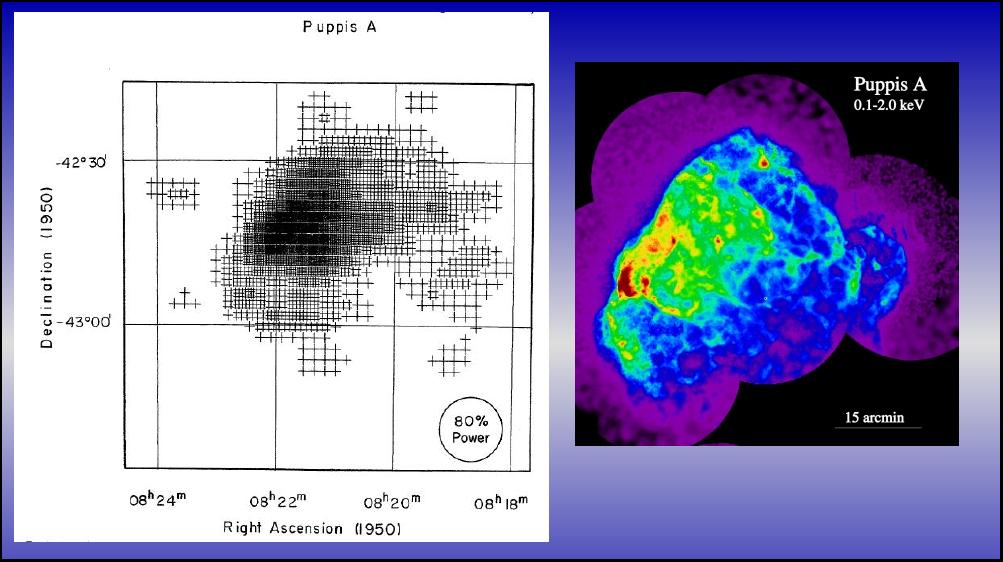
 Credit: S. Rappaport et al. (1979, ApJ Letters, 228, 99); S. Snowden
Credit: S. Rappaport et al. (1979, ApJ Letters, 228, 99); S. Snowden
Origin of X-ray Astronomical Photography
Images of the X-ray emission from astronomical objects are hard to make,
since x-rays are difficult to bring to a focus. This is because incident
X-rays either pass right through or are completely absorbed by most
materials. In the early 1950s it was realized by Hans Wolter that X-rays
could be focussed by a system of mirrors if the X-rays scattered off the
mirror surface at grazing incidence (much like a stone can skip off the
surface of a lake). The so-called "Wolter type I" X-ray
mirror configuration, in which x-rays are focussed by sets of parabolic
and hyperbolic mirrors arranged in concentric shells, has become the most
common type of X-ray mirror configuration used in astronomy. This
configuration was first used to obtain an X-ray photograph of an
astronomical object (outside the solar system) by a group from MIT lead by
Saul Rappaport. Their image of the Puppis A supernova remnant is shown
above left, while a ROSAT HRI observation of Puppis A is shown for
comparison on the right. Though crude by today's standards, this image
clearly showed the complex nature of the X-ray emitting regions in this and
other supernova remnants and helped pave the way for later breakthroughs by
the EINSTEIN and ROSAT telescopes, and the exquisite
images obtained today by Chandra
and XMM-Newton.
Last Week *
HEA Dictionary * Archive
* Search HEAPOW
* Education
Each week the HEASARC
brings you new, exciting and beautiful images from X-ray and Gamma ray
astronomy. Check back each week and be sure to check out the HEAPOW archive!
Page Author: Dr. Michael F.
Corcoran
Last modified May 27, 2001


